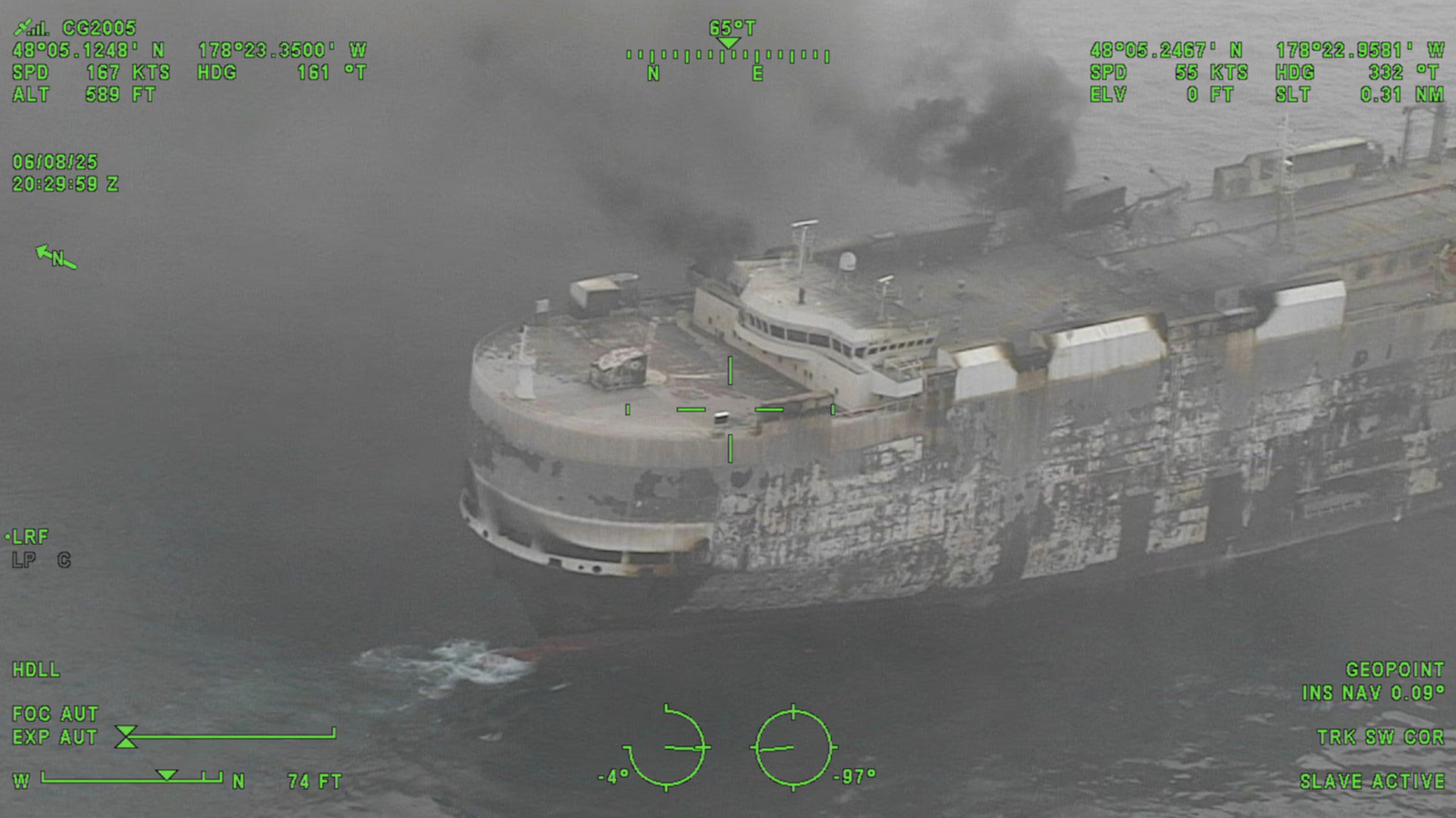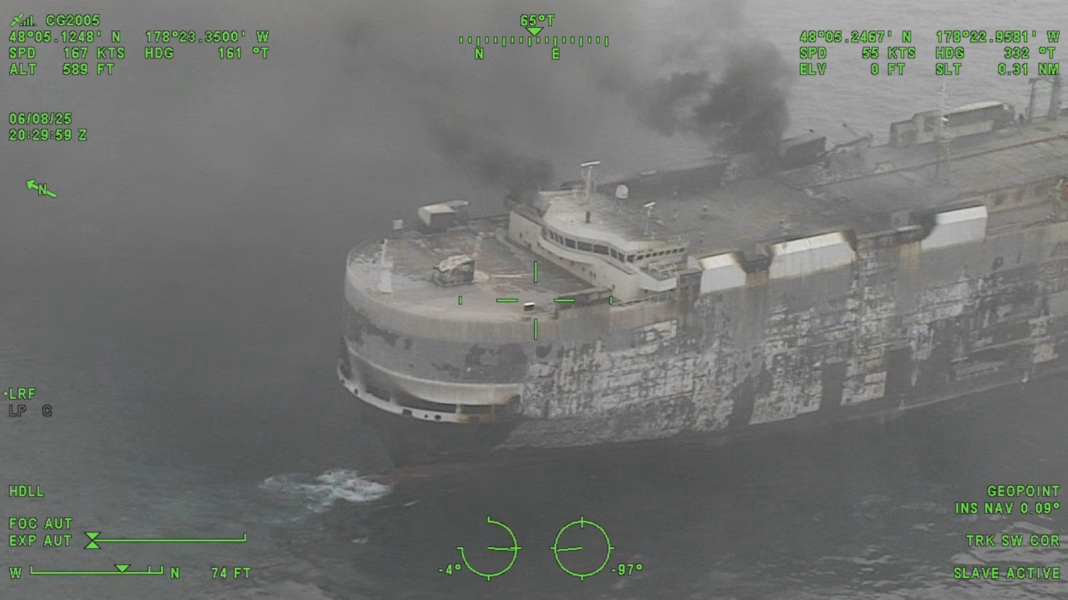A massive 600-foot car carrier has been ablaze for over a week off the coast of Alaska, and it’s raising eyebrows and questions about maritime safety and environmental impact. This isn’t just any ship; it’s a floating fortress loaded with vehicles, including electric cars, which adds layers of complexity to the situation.
What Happened to the Car Carrier?
The fire broke out under mysterious circumstances, and despite the best efforts of firefighting crews, the flames have proven stubborn. The ship, which was en route to its destination, has been left adrift, and the situation is evolving daily. Firefighters have been battling the blaze from the air and sea, but the sheer size of the vessel and the materials onboard have made it a challenging task.
Why Is This Fire So Concerning?
The implications of a fire on a car carrier are significant. First, there’s the safety of the crew and the potential for loss of life. Thankfully, all crew members were evacuated safely, but the risk remains for those attempting to control the fire. Then, there’s the environmental aspect. The ship is carrying a substantial amount of fuel and potentially hazardous materials, which could pose a threat to marine life if the situation escalates.
What’s the Impact on Electric Vehicles?
Interestingly, the ship is reported to be carrying a number of electric vehicles (EVs). This raises concerns about the safety of lithium-ion batteries in a fire. These batteries can ignite and burn fiercely, complicating firefighting efforts. Experts are closely monitoring the situation, as the outcome could influence future shipping regulations for EVs and their batteries.
What Are the Next Steps?
Authorities are working on a plan to contain the fire and prevent any potential environmental disaster. This includes assessing the risk of the ship sinking and the possibility of a fuel spill. The Coast Guard is involved, and they’re not taking any chances. They’re also keeping a close watch on the surrounding waters to ensure that any pollutants are managed swiftly.
The Bigger Picture: Maritime Safety and Regulations
This incident shines a light on the broader issues of maritime safety and regulations, especially as the shipping industry evolves with the rise of electric vehicles. As more EVs hit the market, shipping companies will need to adapt their practices to ensure safety at sea. This could mean stricter regulations on how these vehicles are transported and what safety measures are in place to handle emergencies.
What Can We Learn from This Incident?
While the situation is still developing, it serves as a stark reminder of the complexities involved in modern shipping. The big takeaway? This isn’t about perfection—it’s about smarter adjustments. Whether it’s reevaluating safety protocols or enhancing firefighting capabilities, there’s always room for improvement.
If you’re in the shipping industry or simply a curious observer, keep an eye on how this situation unfolds. It’s a vivid example of the challenges we face in a rapidly changing world, and it highlights the importance of preparedness in the face of unforeseen events. Start with one change this week, and you’ll likely spot the difference by month’s end.


